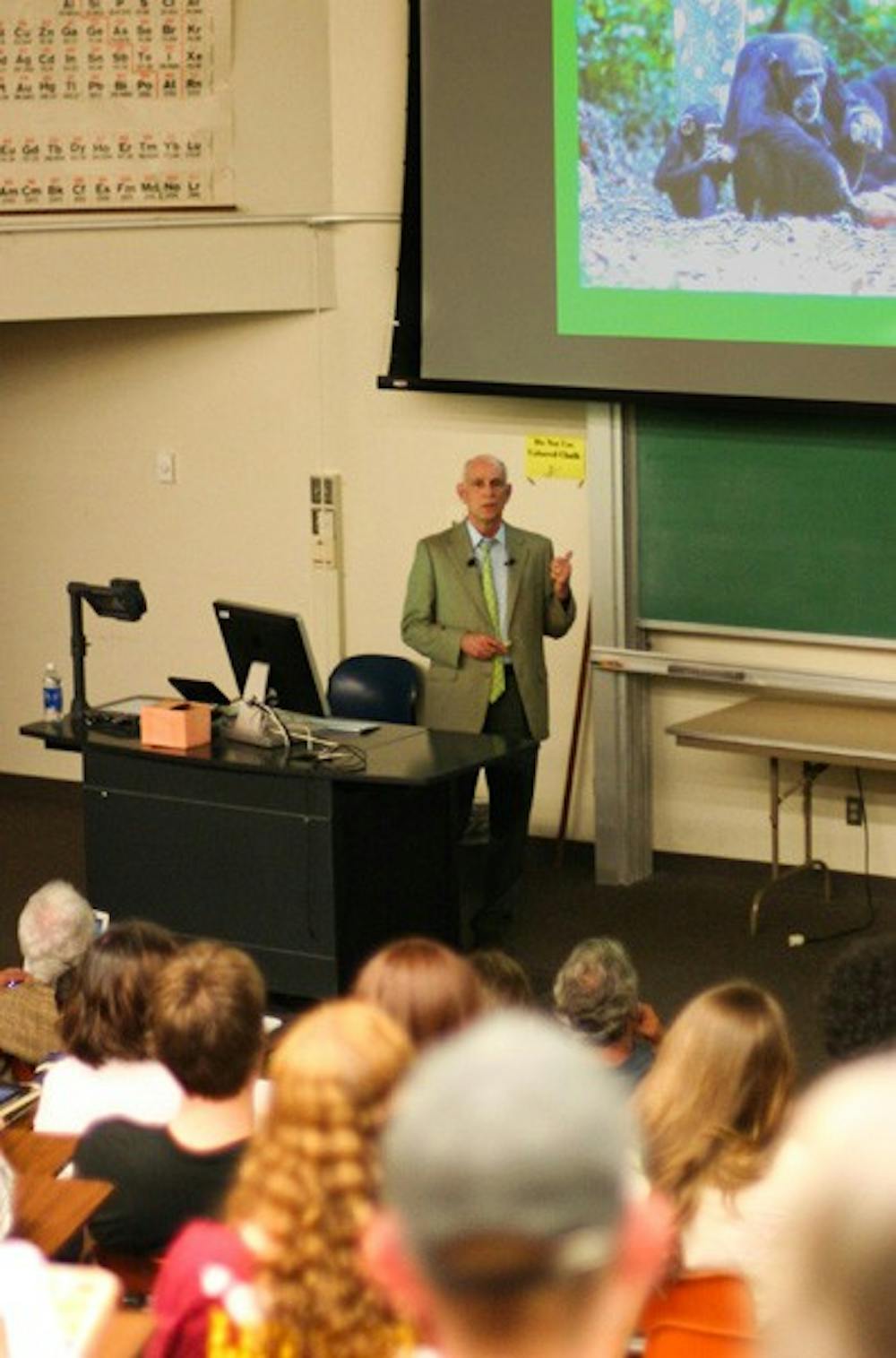A University of Cambridge professor believes the human species can learn much about itself by looking at one of its closest living relatives — the chimpanzee.
William McGrew from the U.K. kicked off ASU’s Institute of Human Origins 30-year anniversary celebration Thursday with a lecture focusing on how chimpazees’ early tool use and behaviors could indicate what the earliest human ancestors were like millions of years ago.
McGrew is an esteemed professor from Cambridge’s Leverhulme Centre for Human Evolutionary Studies.
In his lecture, McGrew cited tool-use as an example of one of the many ways chimpanzees are the closest living relatives of humans.
“Their social exchanges, how behavior in the monkeys changes and varies from habitat to habitat, living environments and culture could help us to better understand our own human ancestors,” McGrew said.
McGrew’s talk was the first of a seven-part lecture series put on by ASU’s Institute of Human Origins to celebrate the organization’s 30-year anniversary.
The lectures that will be conducted over the next 12 months will feature guest speakers discussing different points of view on the evolutionary process and how humanity came to be in its present state.
“Dr. McGrew has been one of the leading researchers on chimpanzee behavior, ecology and technology since the early 1970s,” said Gary Schwartz, an associate professor in the School of Human Evolution and Social Change. “He has vastly expanded our understanding of our closest living relative, and provides a rich and broad comparative framework in which to model the socio-ecology of our earliest human ancestors.”
The lecture touched on McGrew’s many years of research experience on chimpanzees in the wild, research that includes their use of tools.
McGrew has devoted the last 30 years of his life to researching chimpanzees in their natural habitats in order to gain anthropological insight into what the earliest humans could have been like.
“[Chimpanzee tool-use] may serve as an important model for framing questions about the pre-stone tool industries that may have characterized the earliest members of the human family tree, as far back as six million years ago,” Schwartz said.
The next lecture from this series will be given by Peter deMenocal from the Department of Earth and Environmental Sciences at Columbia University on April 29. He will discuss the climate’s effects on human evolution over the years.
Reach the reporter at lawalke4@asu.edu





